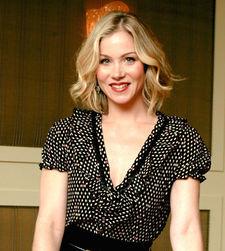 NEWS
NEWSDefend Yourself

Oct. 5 2008, Published 9:55 a.m. ET
Being a woman and growing older are the two leading risk factors for breast cancer. But as we’ve recently seen with Christina Applegate, 36, age sometimes doesn’t even matter. The Samantha Who? star, who was recently nominated for an Emmy, began getting breast cancer screenings at the age of 30, since her mom is a repeat survivor.
Dr. Peter Pressman, co-author of Breast Cancer: The Complete Guide, tells OK!, “We’ve always been concerned about a higher risk for women with a history of breast cancer in their families.” There have been some extraordinary medical breakthroughs in recent years, which mean women can now know if they are at a higher risk. Dr. Pressman reassures us that these days “breast cancer is truly not a death sentence.”
Get Checked
Women with no family history of breast cancer are advised to start getting yearly mammograms at 40. If there has been breast cancer in your family, “start at 35 or at least 10 years earlier than the youngest cancer in the family,” advises Dr. Pressman. Mammograms are the best way to find cancers before they grow into anything harmful. “Smaller cancers are frequently earlier cancers, and there’s a better chance of survival,” says Dr. Pressman. With genetic testing, doctors can now do a blood test to check if you have inherited a mutated gene, which puts you at a very high risk. Know your family history, and if need be, get the blood work done. “You can take an 85 percent risk of developing cancer and turn it into a 99 percent assurance that no cancer will ever form,” says Dr. Pressman.
Want OK! each day? Sign up here!
Treatment Options
Depending on the type of breast cancer, there are two treatment options that are mainly used: a lumpectomy or a mastectomy. “With a lumpectomy, the lump itself is removed along with some tissue around it. It’s done under local anesthesia, and it’s an outpatient procedure,” explains Dr. Pressman. A mastectomy means removing the breast, and most of the time they will reconstruct your breast at the same time. Christina explained her tough decision to Good Morning America. “My decision, after looking at all the treatment plans that were possibilities for me, the one that seemed the most logical and the one that was going to work was to have a bilateral mastectomy.” And it was clearly a good choice for the young star. “I’m clear,” she continued. “They got everything out.”
Protect Yourself
Early detection and family history is key, but lifestyle plays a huge role in your risk as well. Dr. Pressman says that there is still a correlation between obesity and developing cancers. Being physically active and remaining lean as you age is crucial. He further points out that studies have shown that alcohol intake also has an impact. “Studies where women drink one glass of wine or less per day, have shown a big difference of risk for breast cancer than if they drink two to three glasses per day.” Just some more reasons to stay hydrated with water and live an active lifestyle. It’s not just for your waistline.


